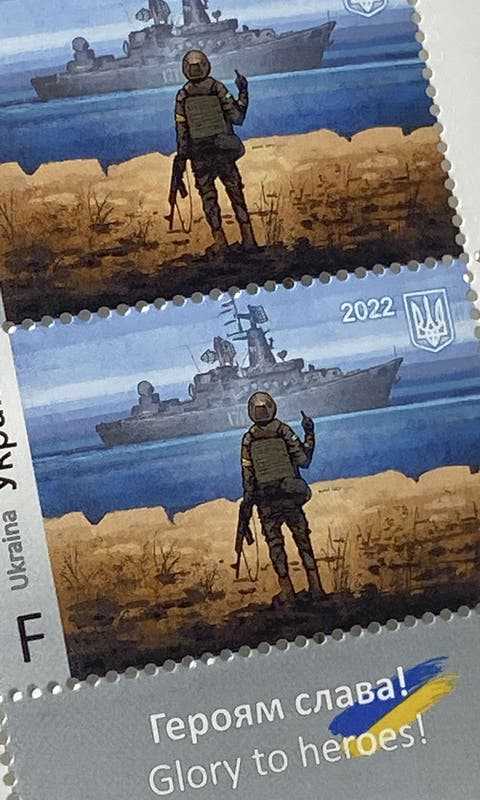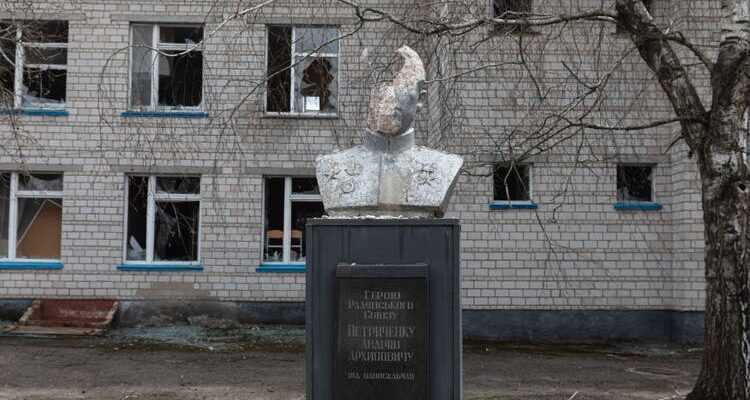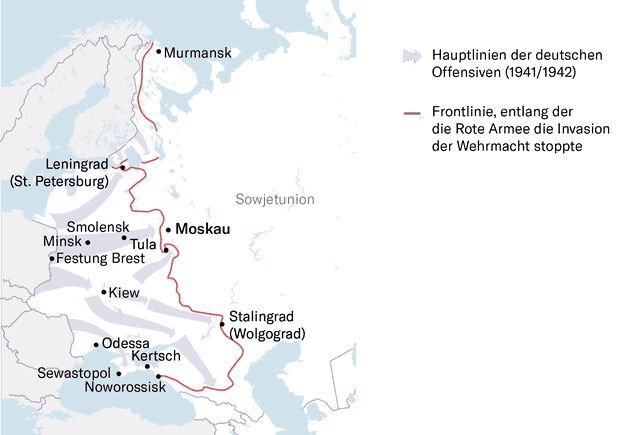The defensive struggle against Russia creates patriotic symbols in which fiction, truth and Soviet models merge. The heroes have become figures of identification for the Ukrainian nation.
New Ukrainian heroes emerge from the ruins of war and based on Soviet models.
Propaganda knows no shades of grey. As “Cook of War” it was recently described by the Nobel Peace Prize winner Dmitri Muratow. She divides the world into good and bad, gives birth to villains and heroes. In its defensive struggle, Ukraine is not only confronted with a military but also a propaganda steamroller from Russia – and is doing surprisingly well in both fields. But Kyiv isn’t too particular about the truth either. The mobilization of the population and foreign supporters is a priority.
In order to strengthen the will to fight, the Ukrainians rely in particular on heroic figures, which have become symbols of patriotism, the courage to face death, but also collective suffering. The hero is more than an individual fate, he becomes a figure of identification for the entire nation. Three “figures” provided particular inspiration in the first months of the war: the defenders of Snake Island, the “Ghost of Kyiv” and the new hero cities.
1. The Defenders of Snake Island
Right at the beginning of the war, the story of the heroic border guards on the tiny island of Snakes in the Black Sea went around the world. According to the General Staff in Kyiv, 13 of them, like David, opposed the Goliath of the Russian Armada.

The special postage stamp of the Ukrainian Post
When the flagship “Moskva”, which had since been sunk, was asked to surrender, they threw “F*** you, Russian warship!” opposite. The answer has become the dictum of the Ukrainian resistance, reproduced thousands of times on posters across the country and even immortalized in a postal commemorative stamp.
After that, according to Volodymyr Zelensky, the defenders were killed by the Russian barrage of fire. “All border guards died heroes defending Snake Island to the last,” the president announced. He posthumously awarded them the honorary title “Hero of Ukraine”.
In many cultures, heroic death is considered the highest form of self-sacrifice. However, the Ukrainians use a lot of Soviet models. Even the most important heroes of the Red Army in World War II almost never survived – and as symbols they became shining examples for new generations. Today’s Ukrainian leadership remains shaped by these narrative patterns. Thus, the “Heroes of Ukraine” receive the same Order of the Golden Star as their Soviet predecessors and Russian contemporaries. Only the loop is in the national colors.
The competition of propaganda and counter-propaganda in today’s information warfare makes heroic myths harder to sustain. For example, at the end of February, Ukrainians had to admit that the defenders of Snake Island were alive because Russian media published videos of them in Crimea. On March 24, 10 of them were exchanged for Russian prisoners in a much more discreet move. What happened to the rest of the soldiers on Snake Island remains uncertain. She remains an important and contested symbol: On Tuesday, the Ukrainians reported they would have bombed the positions there with Bayraktar drones.
2. «The ghost of Kyiv»
The drones in patriotic songs are sung about as “Russian killers”., but are only a protagonist of the struggle for the skies over Ukraine. Another is the so-called Ghost of Kyiv. Videos of a MiG-29 fighter jet that allegedly shot down six enemy planes on the first day of the war alone have appeared on social media. Former President Petro Poroshenko tweeted about this feat, and the armed forces even released a picture of the pilot in mid-March with the words: “Occupier, I’ll get your soul!”
“Привіт, окупант, я лечу по твою душу!”https://t.co/FMNx8bkQeC pic.twitter.com/n0dx2ZSbtE
— Генеральний штаб ЗСУ (@GeneralStaffUA) March 11, 2022
Fanned by domestic and foreign tabloids, the mythical figure of the heroic air fighter became increasingly superhuman. The first flying ace of the 21st century liquidated 40 enemy aircraft, it was said, with a video also appearing that later turned out to be a fake. At the end of April, the Times “revealed” the identity of the ghost of Kyiv: it was Major Stepan Tarabalka. According to the Air Force, this was already on March 13th «in the fight against superior forces of the Russian occupiers» to like.
By linking the “ghost” to a specific dead person, it lost its symbolic effect for the ongoing resistance. The command of the Ukrainian Air Force therefore changed the communication strategy on April 30. Tarabalka is neither the ghost of Kyiv nor has he shot down 40 planes. “It’s a super legend created by the Ukrainians,” writes the Air Force on Facebook. She concedes that almost every heroic figure is actually a metaphor: “It represents the collective of Air Force pilots protecting the skies over the capital.”
President Zelensky honored Tarabalka on March 19 posthumously as «Hero of Ukraine», along with 11 others, only four of whom survived. The honorees are representative of the thousands of dead whose number Kyiv has made a state secret: Ukraine officially speaks of 3,000 soldiers killed by mid-April, which is probably a gross understatement. Many destinies remain unclear and families in the dark. The heroic stories give them, at least apparently, a concrete form that is publicly recognized.
3. The Hero Cities
But the most powerful symbols of collective struggle and suffering are the hero cities. 13 of these places were already recognized in Soviet times for their contribution to the victory against Nazi Germany, two of them are in mainland Ukraine, two in Crimea. In March, Zelensky appointed now ten more, including Kharkiv, Mariupol and Bucha – the sites of the most brutal battles and worst Russian crimes.
The President praised “the mass heroism and steadfastness of citizens in defending their cities against Russian armed aggression.” He added that the awards go to those millions of Ukrainians who “do everything they can for our victory.” The rhetoric is reminiscent of Soviet models – with the difference that Zelensky always combines the military resistance with the commemoration of the civilian victims.
The fact that this is not always possible without tension in a democracy is shown in the discussions about whether the increasingly futile resistance in Mariupol should not be ended in order to spare the tens of thousands of civilians in the city. At the same time, the bitter defense of the steelworks is a powerful symbol of resistance.
And yet the Soviet roots give the hero cult a recognition value among a significant segment of Ukrainians. It has become a key aspect of the ideology of the independent Ukrainian state. It has already emancipated itself from the communist components in recent years. Russia’s incursion is now accelerating the removal of these elements as well: That’s how activists got the names of Russia’s hero cities a month ago in Kyiv away from a central monument. They were titled the new Ukrainian members of the patriotic pantheon.

